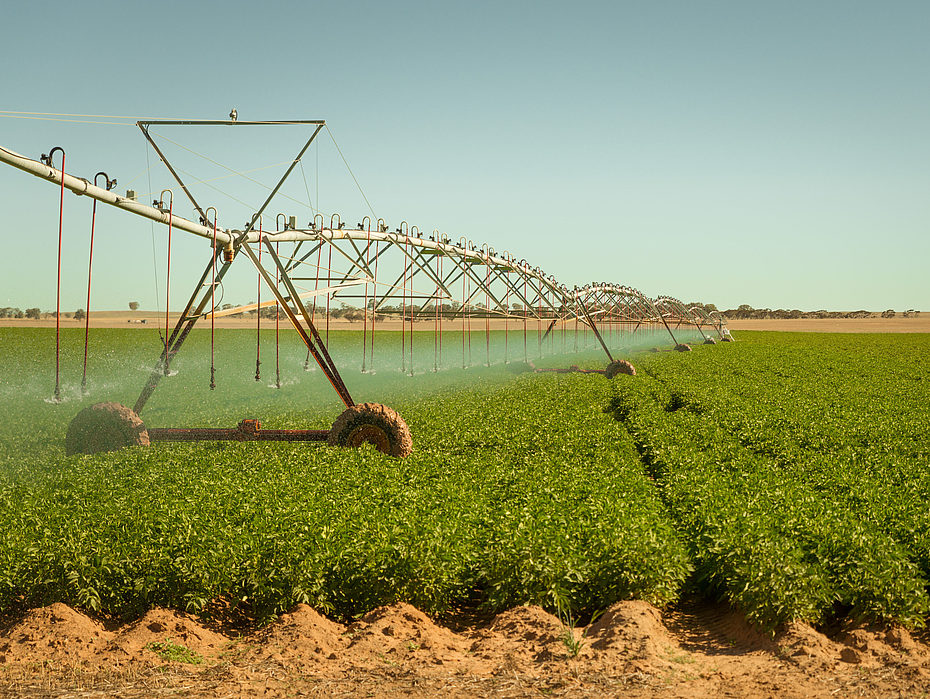ESG & Sustainability in Australian Agriculture
We’ve all heard of it. We all (mostly) understand it. So, how do we implement it on farm?
You may be tired of hearing about Environment, Social, and Governance (ESG), the issues it covers, and the implications for Aussie ag but, as growers, it’s an unavoidable reality.
As businesses continue to prioritise ESG, their focus shifts toward the start of their supply chain—including agriculture.
Here are the facts:
85% of Australian agribusinesses undertake sustainability reporting.
62% of Australian agribusinesses are committed to reaching 2050 NetZero targets.
NZ, UK, and USA now have mandatory climate risk disclosure requirements for publicly listed entities
As of September 2021, global sustainable lending activity is worth $480 billion—this was valued at $9 billion in 2009.
(Source: Agribusiness Australia 2023)
Like it or not, ESG is part of the future. So, how can you leverage precision ag to achieve sustainability goals while also benefitting your bottom line?
Fertiliser
Precise targeting for optimal application
Nitrogen fertilisation is the most significant activity producing Green House Gas (GHG) emissions in the agricultural sector globally (source).
According to a 2022 study, the synthetic nitrogen fertiliser supply chain is responsible for 2% of global heat-trapping gas emissions—that’s greater than the emissions from all aviation (source).
So, how can you optimise your fertiliser usage for better ESG? We know that fertilisation is one of the most significant factors in increasing yield—but lowering usage does not mean lowering profit.
With Variable Rate Application (VRA) solutions, you can adjust the rate of fertiliser and other farm inputs during application to match the field’s predetermined target rate.
With more precise targeting, control, and optimised input, VRA helps reduce overapplication, chemical wastage, and water usage while minimising environmental issues (such as downstream impacts) and increasing yields and crop quality.
A 2010 study estimated that Variable Rate fertilisation can increase wheat production between 1% and 10% while offering savings in nitrogen fertilisation between 4% and 37% (source).
Spraying
Reduce chemical usage, water usage, and drift
Spraying is regularly put in the spotlight during discussions around sustainability, with the impact of farm chemicals on both surface water and ground water quality often at the forefront.
Ingestion of or exposure to pesticides has been cited to cause fish kills, reproductive failure of birds, and acute illness in people; often caused by misapplication and improper chemical storage and disposal (source).
Not to mention some of the damage we have seen caused by spray drift to other crops and vegetation this year alone.
With camera spraying systems, growers can precisely apply only the required amount of chemical—reducing input usage, ground and water contamination, and drift while preserving wildlife habitats and increasing profit.
Spot spraying solutions like Trimble’s WeedSeeker 2 can reduce chemical usage by up to 90% by automatically adjusting and maintaining accuracy on-the-go based on temperature, light, and soil conditions.
For blanket spraying applications, the MagrowTec system optimises droplet application, coverage, and adhesion to:
- Increase coverage by up to 20%
- Reduce drift by up to 70%
- Reduce chemical usage by ~25%
We have even seen growers cut out an entire spray due to the better efficacy achieved using MagrowTec.
Fuel Usage
Prevent overlap and row skip to reduce fuel consumption
Most growers are already implementing some level of steering and guidance, but are you using the best system for your operation?
With guidance technology, growers can improve pass-to-pass efficiency, reduce overlap and under application when seeding, planting, weeding, and harvesting—reducing input usage, including fuel.
Studies have shown that using machine guidance during planting and fertiliser application led to cost savings of approximately 2.4%, 2.2% and 10.4% for seed, fertiliser and tractor fuel respectively (source). Guidance systems are also proven to reduce fuel consumption by 6.32% (source).
Trimble has proven growers can achieve up to 10% input savings using its wide selection of automated, hands-free, and assisted guidance and steering solutions by preventing overlap and row skip to save fuel and other input costs.
A recent addition to its repertoire, Trimble’s enhanced Path Planning Technology enables growers to optimise path plans in terms of coverage, time, distance, and operational speed to reduce unnecessary passes at every stage of the farming cycle.
Plus, with NextSwath automated end-of-row turn technology and Controlled Traffic Farming (CTF), you can reduce soil compaction and degradation, yield loss, and water usage while improving fuel consumption.
Data Collection Software
Make the most out of your data collection technology
Chances are your precision ag equipment already has built-in data collection technology. But are you making the most of that data?
With Australia set to implement mandatory climate-related financial disclosure requirements as soon as 2024 (source), technology that streamlines the data collection and reporting process should be your best friend.
From farmers in the Great Barrier Reef catchment area to WA growers selling canola to EU markets, ESG mandates are now a part of your process.
By making the most out of your precision ag software, growers can automatically capture and store data from all aspects of your process to support any reporting efforts.
From profit mapping to application mapping, Trimble has a range of software solutions to track your farming across your fleet.
We all understand that, as growers, we need to act and utilise precision technologies to reach our goals.
Not everyone needs to jump straight to the latest and greatest precision solutions across your entire fleet—there are many ways to incrementally improve your footprint without breaking the bank.
ESG is our reality, but there are many benefits to implementing sustainable practices. To improve your ESG efforts, the key is optimising input usage, operational efficiency, and data collection: things that will benefit your bottom line, regardless of industry mandates.
So, to summarise—ESG: you may not like it, but you can gain from it.
Chat with your local Vantage BMS rep to discuss how you can implement precision ag on your farm.







